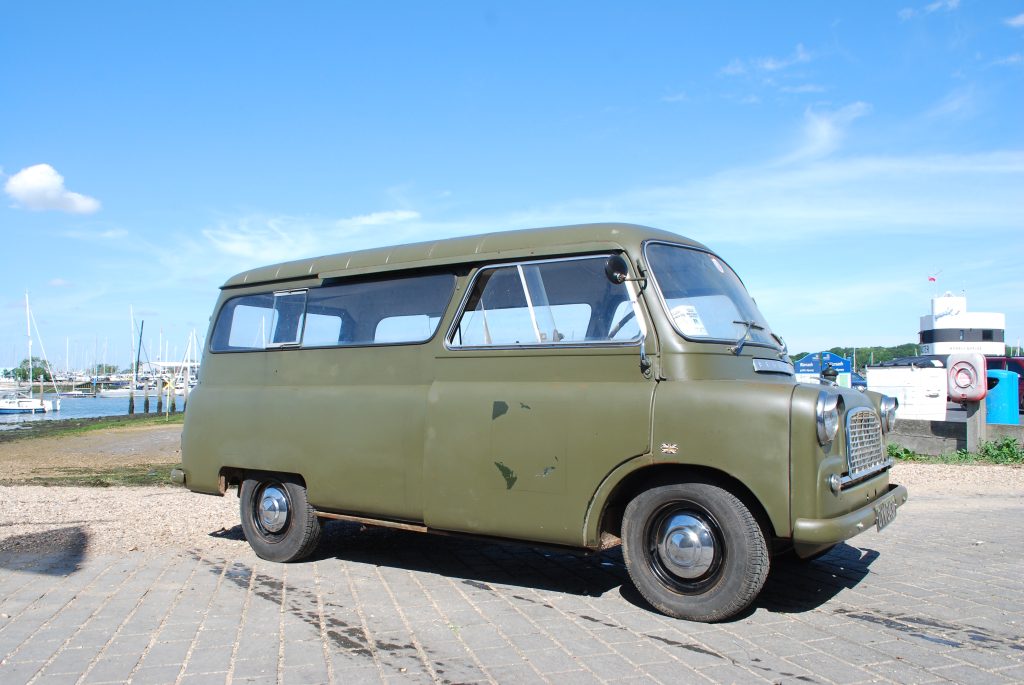
Mike Neale tracks down an ex Auxliary Fire Service Bedford CA Utilabrake with just 27,000 miles on the clock.
Most people are familiar with the ‘Green Goddess’ Bedford fire engines of the Auxiliary Fire Service. These were commissioned by the government during the Cold War as civil defence vehicles, in readiness for a nationwide response to a nuclear attack. However, the AFS/Civil Defence fleets also included mobile Control Units, Communication Units, Auxiliary Towing Vehicles, Hose Layers, Foam Tenders, Transportable Water ‘Bikini’ Units, Food & Drinking Water Carriers, Mobile Kitchens, Spare Clothing Carriers, Petrol Carriers, Recovery Vehicles, Ambulances, Land Rover and Austin Gipsy Command Cars, Motorcycles, Utility Vans and the humble Personnel Carrier.
Many of the latter were long wheelbase Bedford CAL Utilabrakes converted by Martin Walter Ltd. of Folkestone. They were, of course, famous for their Dormobile conversions. They also produced the Utilicon, Utilabus and Workobus, plus mobile shops and pick-ups. These were all approved by Bedford and sold through their dealerships. The Utilabrake had a row of forward-facing padded seats behind the front seats, plus side-facing seats behind those. Bedford CA vans were sent from Vauxhall’s Luton factory by rail to Folkestone for conversion.
AFS Civil Defence
The postwar AFS was established in November 1949. A big campaign for voluntary recruitment followed, as well as the commissioning of the emergency vehicles. The plan had been for every local authority fire brigade to have two male AFS personnel for every full-time person, and one for every part-time member. It was also suggested that 10% of roles be allocated to women. This would have amounted to some 55,000 people, but was never achieved.
Due to the high energy and widespread devastation of nuclear bombs, firemen and fire appliances would be stationed outside target areas. This became even more important with the development of the hydrogen bomb, with a radius of damage of around 20 miles compared to around one mile for an atom bomb. The solution proposed was to have self-sufficient Mobile Fire Columns (MFCs). Each of these would consist of 600 men and 90 vehicles, and could operate away from base for a long period of time.
Recruitment, however, initially proved to be very slow, despite extensive leafletting, publicity events and the release of a recruiting film, the Waking Point, in 1951. Large-scale training exercises and simulated deployment of MFCs took place in various parts of the country in the early 1950s. By the end of 1953, the total AFS manpower had grown to almost 20,000. The government proposed that, in the event of an attack, local fire services would be nationalised and fire fighters supplemented by RAF reservists.
Green Goddesses
The first vehicles operated by the post-war AFS were wartime appliances from the National Fire Service, such as Austin K2s and Fordson 7Vs. The first purpose-built Green Goddesses were ordered by the Home Office in 1951.
Training and big exercises, as well as new vehicle purchases, continued during the 1960s. However, the government considered that the threat of nuclear war had diminished by 1968, and the AFS and Civil Defence were disbanded. All personnel were stood down and vehicles were either readied for disposal or stored in government depots. Several Green Goddesses went to regular fire brigades. Others were retained by the Home Office until the mid-2000s, whilst most of the other vehicles were disposed of.
As AFS vehicles were held in reserve for most of their lives, they typically have very low mileages. They were also stored in near-ideal conditions, and maintained ready for immediate use if needed.
Third generation Bedford CA
This Auxiliary Fire Service Bedford Utilabrake was first registered on April 14 1965, and has the larger windscreen, pressed alloy grille and fractionally larger external “bonnet” of the third generation of Bedford CA, which Bedford confusingly called the Mk2. Being a CAL, it has the longer 102in. wheelbase, compared to the 90in. wheelbase of the CAS.
It has its original 1507cc petrol engine, as used in the Vauxhall Victor F-Type, and the standard three-speed column change. Four-speed gearboxes were offered as an option by Bedford, but doubtless not specified on cost-conscious government contract vehicles. Later in 1965, CA vans gained the 1594cc engine. The polished Bedford badge below the windscreen usually had a black painted background. Was this also a cost cutting measure, or has it just lost its black paint over time?
It was one of a batch of thirteen Bedford CA Personnel Carriers registered CYY335-347C in 1965. These followed an earlier batch of 27 registered 640-666BYV in 1961. These would have had the smaller single piece windscreen. One more, one registered SXF 494 in 1956, wwould have been a split-screen. A further 14 were registered JJD211-216D and JJD252-259D in 1966. They had Auxiliary Fire Service lettering on the lower rear side panels and the AFS logo on the sliding front doors. Other Personnel Carriers on the fleet were Ford Thames 400Es.
CYY343C was bought by current owner, Tim Rose of Hampshire, in June 2023, who became its fifth owner.
Found on Facebook
“I spotted it on Facebook Marketplace and was drawn to it as it was a minibus with its original seats, which is quite unusual,” explains Tim. “I shouldn’t really have bought it, but when I went to view it in Fareham, I discovered its very low mileage, less than 27,000 miles from new, as well as the fact that the vendor knew my dad many years ago. Driving it, you can tell it hasn’t done the normal work that a van has. I can’t imagine it drove better when it left the factory. There is no back axle whine and no signs of wear on the original running gear. The front bumper doesn’t even rattle!” Is that a first for a Bedford CA?
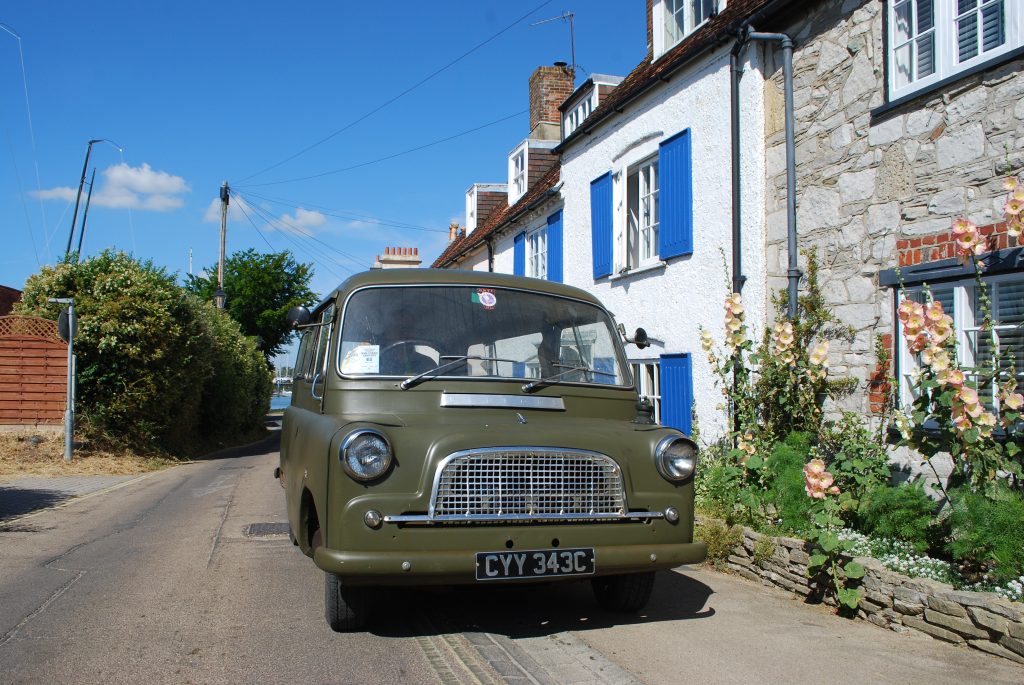
“The interior engine cover comes off for access for maintenance. There are no fumes from the engine,” Tim continues. “On the road, 40-45mph is a comfortable speed. The gearbox is a dream, you can’t fault it, and the brakes are good – it stops well. It is a nice size for a van – you can carry long stuff in it. I didn’t actually realise it was a long wheelbase one to start with. There’s more room in it than in the VW T5 I once had.”
Holes in the back
On the back door, there are holes where a jerry can used to be mounted. Tim doesn’t know if this was original AFS equipment or added later. There are also holes on the side, which may have been to hold a shovel. There is a holder for a fire extinguisher inside the driver’s door.
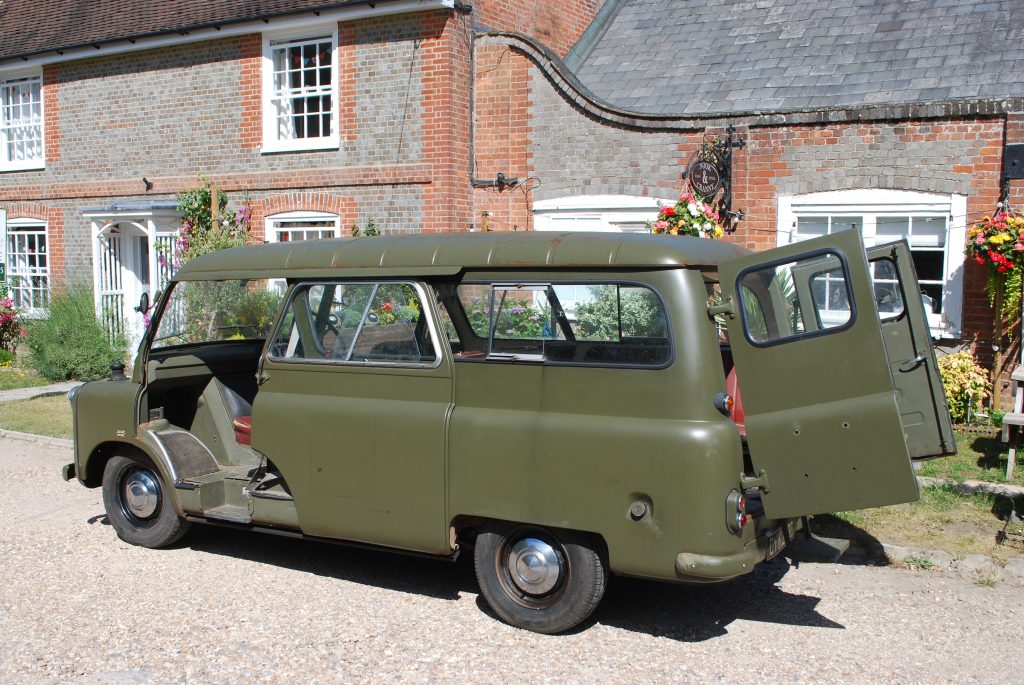
The Bedford was repainted from its original AFS bronze green in the current military olive green drab by a previous owner whose wife apparently wanted it that colour. The original paint can be seen in places underneath.
Engine and service parts for the CA are not too difficult to get hold of, due to being shared with Vauxhall cars. Body panels are harder to obtain. Fortunately, it doesn’t seem that this one will need any. FOr the main part the only rust is surface rust. Plus the odd area needing localised repairs, such as the bottom of the rear doors. Overall, it actually looks not unlike most of these did back in the mid-late 1970s when they were 10-12 years old; still solid overall but with a few bits of rot. At the time, these were often repaired by pop-rivetting new metal on to the rear wheelarches, rear door bottoms and similar.
Scruffy but Solid Bedford CA
“It’s a very solid van, despite its scruffy appearance,” notes Tim. “The panel below the back doors is rust free, as is the chassis. I did find some dodgy wiring. But a friend of mine is an auto electrician and sorted that out for me.”
The wide front doors make it easy to get into the back with the front seats folded forward. The middle seat on the row behind folds over so you can walk right through from front to back. The bases of the rear seat squabs need recovering, which seem somehow to have suffered considerably more wear and tear than the parts that you actually sit on.
Tim had hoped to restore the Bedford to its original AFS livery, which it really deserves, but due to other projects, including a Morris J-Type Van, he has decided to put it up for sale. Let’s hope that whoever buys it carries out a sympathetic restoration. It would be good to see this rare survivor on the rally scene as it appeared in its Cold War civil defence days, rather than being converted to a camper.
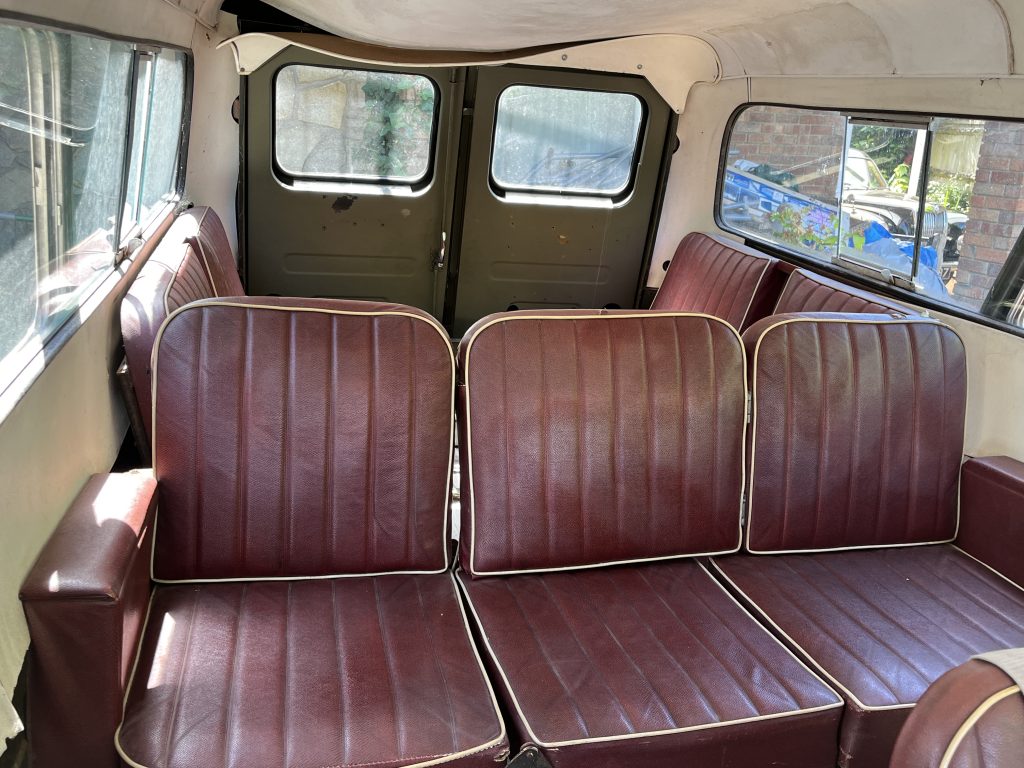
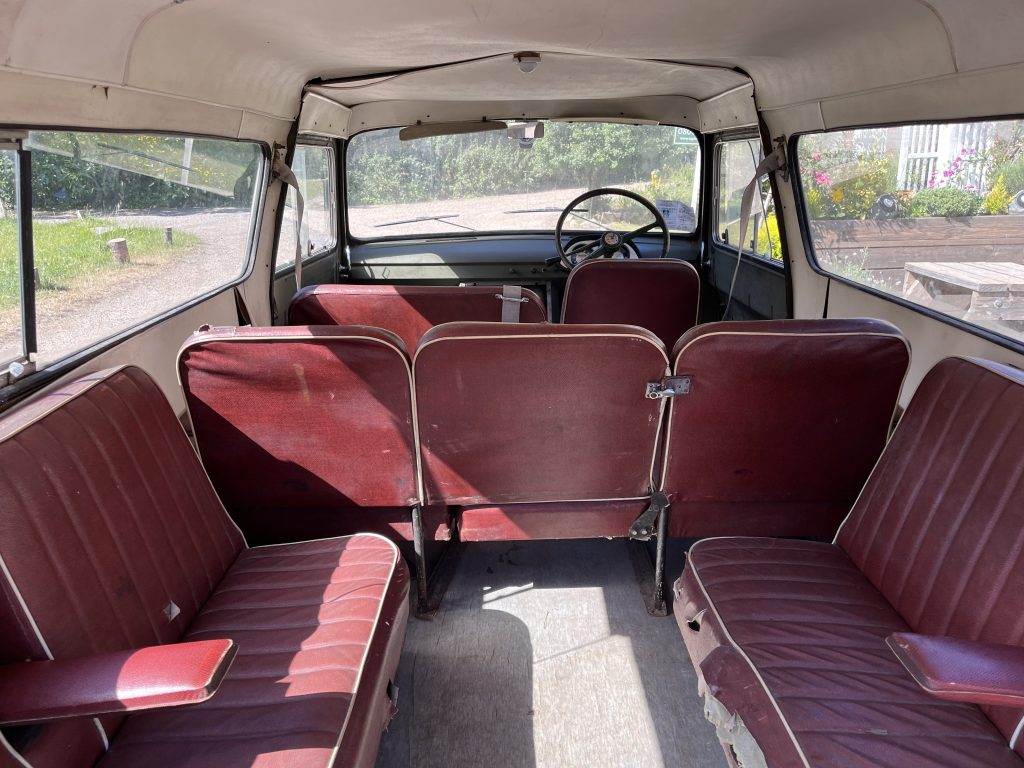
To read more articles like this every month, subscribe to Classic & Vintage Commercials magazine by subscribing here. And find the latest news, exclusive looks and more at the CVC website here.

